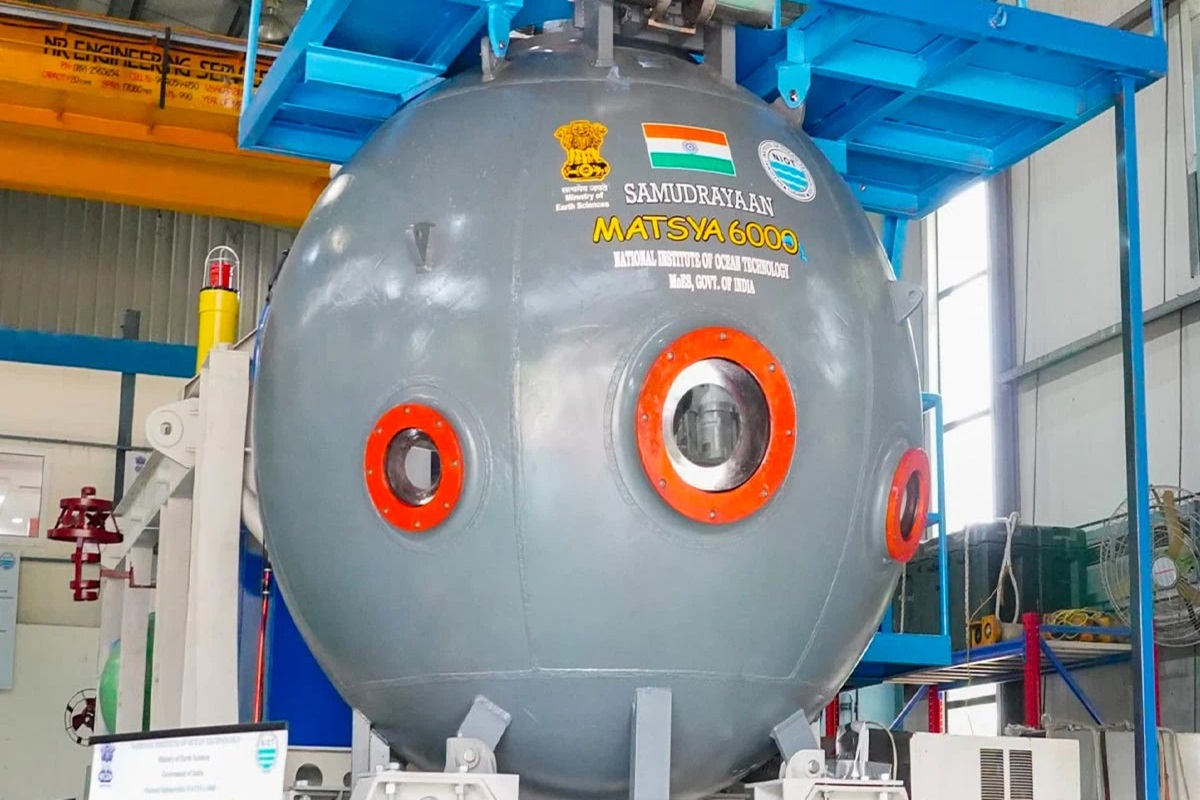Samudrayaan set to commence: India prepares to deploy three scientists beneath the ocean
India is charting a new course following its triumphant lunar landing, named Samudrayaan. The nation is gearing up for a…

India is making significant strides in deep-sea exploration with the development of its maiden manned submersible, the ‘Matsya 6000.’ This groundbreaking project is being spearheaded by the National Institute of Ocean Technology (NIOT) and holds promising insights into the mysteries of the ocean’s depths. Let’s delve into the fascinating details of this remarkable submersible.
The ‘Matsya 6000’ is currently in the developmental phase, poised to unlock the secrets hidden beneath the waves. This innovative vessel boasts a robust construction, featuring a titanium alloy sphere with an impressive 80mm thickness and a diameter measuring 2.1 meters. This sphere is engineered to withstand the immense pressure found 6,000 meters below the sea’s surface, where few have ventured before.
Advertisement
The inception of this ambitious endeavor dates back to August 31, 2019, when Dr. M.A. Atmanand, the former director of NIOT, unveiled plans to create a submersible capable of carrying three individuals to explore depths of up to 6,000 meters. Drawing inspiration from ISRO’s Gaganyaan mission, this visionary project aims to conduct comprehensive research in the deep sea, marking a significant step in India’s pursuit of oceanic mineral exploration.
Advertisement
Despite its initial proposal, the ‘Matsya 6000’ project faced delays in obtaining the necessary approvals. The green light finally came on June 16, 2021, when the Ministry of Finance granted its final approval.
With this crucial clearance, the project officially set sail on October 29, 2021. A successful uncrewed trial of the ‘personnel sphere’ followed. During the trial, the sphere, constructed from mild steel, submerged to the impressive depth of 6,000 meters in the Bay of Bengal, off the coast of Chennai.
A substantial allocation of ₹4,077 crore (approximately US$550 million) over a five-year period underscores the government’s commitment to advancing deep-sea exploration.
Safety remains paramount in this pioneering endeavor. Scientists conducted a rigorous testing to ensure the well-being of the crew. A pressure hull, constructed from steel, underwent rigorous tests at depths of 500 meters. Additionally, they conducted human trials at a depth of seven meters to evaluate the functionality of life support systems.
As India forays into the uncharted depths of the ocean with the ‘Matsya 6000,’ the nation stands poised to make remarkable contributions to marine science and technology, reaffirming its position on the global stage in the realm of ocean exploration.
Advertisement